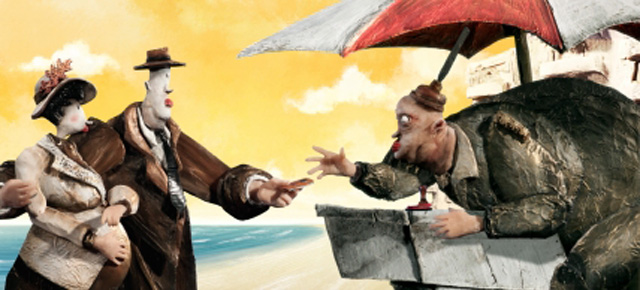
Hollow Land filmmakers Uri and Michelle Kranot: a partnership in art and in life
Hollow Land filmmakers Uri and Michelle Kranot: a partnership in art and in life
This is a guest post written by Wendy Helfenbaum. Wendy is a Montreal-based freelance writer and television producer who has written about film, animation and the arts for AppliedArts, The Accolade and Costco Connection.
The first seeds of Hollow Land were planted with a sketch of a man sitting atop an upside-down pot with a plunger on his head.
A poem Uri and Michelle Kranot heard on the radio, coupled with a sepia-toned photograph featuring two finely-dressed immigrants clutching battered suitcases, further inspired the bare bones of the plot. Hollow Land’s first rough script came together on a car ride between Montreal and Ottawa, while Michelle and Uri’s children slept in the back seat.
“The photo reminded us of stories we’d heard about people coming from Eastern Europe, getting off the boat into mud and swamps, and sweating through their clothes and furs and just not fitting in,” Uri said.
Michelle notes that from the protagonists’ (Berta and Solomon) arrival in a new land, to the final poignant scene at sea, Hollow Land explores what it feels like to be utterly unprepared for change.
“This couple, standing in the middle of this field, wondering, ‘Now what?’ could’ve been our grandparents,” she explains. “People ask if Hollow Land is about us, and in a way it is, because every single generation in both our families has emigrated. We’re very close to the films that we make.”
Israeli-born animators Michelle and Uri Kranot share a passion for film and for each other. They understand each other’s vision so intimately that they often finish each other’s sentences.
“Our collaboration has always been…” begins Uri.
“Effortless,” concludes Michelle.
In the decade that they have worked together, their films have been co-produced by studios in various countries and screened at many prestigious festivals, winning dozens of international prizes. Their work explores non-conventional, often controversial themes, delivered in arresting styles that push the boundaries of their craft.
After drawing Hollow Land’s storyboard, the Kranots looked for a distinctive, hands-on animation technique to bring their characters to life. They experimented with cutout 2-D clay puppets shot under a camera on a green screen. They set up production in a studio provided by The Animation Workshop in Denmark, where they invented a rather unorthodox animation stand.
“Our tech guy is a sailor, so he came up with this pulley system, as if you were hoisting a sail,” explains Michelle, adding that instead of building sets, they created a flat world on glass, adding digitally composited collage backgrounds.
“Working under the camera is a lot more like performance than anything else, because you have these hot lights, and you get one chance to do it right; I was very energized,” recalls Michelle. “We both wanted something exciting under the camera, and it was important for me to get that satisfaction after a day spent animating, where I could press ‘Play’ and actually see the result. It wasn’t like hand-drawn animation, where you could go back and keep fixing it during many different stages.”
Michelle and Uri developed the initial storyboard together, then Uri revised it and designed the layouts. They created the characters together, with Michelle painting the backgrounds and colours while Uri built the hinges and mechanism. Uri notes that they change places so often during production that they rarely remember who did what.
Uri describes the technique used in Hollow Land as a kind of counter-animation—it was all about timing and spacing, not smoothness. They soon discovered their puppets weren’t entirely suitable for animation—with each shot, the couple discovered how limited the range of motion could be.
“It would be like, ‘Oh, I just lost an arm!’ or ‘The head doesn’t turn properly! Let’s make another,’” laughs Michelle.
Another challenge was how these characters would express emotion, says Michelle.
“The first thing you learn about animation is that the eyes are everything; characters are supposed to blink a lot and maintain eye contact, but we eliminated that,” she says. “We were very much inspired by puppet theatre, and we saw a show where there was nothing but masks—it was all about expressing feelings through gestures. I thought, why don’t we do that? It’s our craft to begin with, so let’s not be afraid.”
Collaborating with three producers proved very rewarding, notes Michelle.
“We really enjoyed working with Marie Bro (Dansk Tegnefilm), Dora Benousilio (Les Films de l’Arlequin) and Marc Bertrand (NFB); they were very supportive, and really stood up for us, which is important in any co-production,” recalls Michelle.
Finishing the film’s music and sound in Montreal was a highlight for Uri, who had composed a musical guide track for the film’s sound designers Normand Roger and Pierre-Yves Drapeau.
“The plan was to have Normand compose the music, but when I sent him the sketch, he said, ‘It’s good; we should keep it’,” recalls Uri. “We wanted the film to feel like chapters of a diary, with the music providing a kind of catharsis—dramatic but also giving viewers a moment to think. At the end, the music is mellow and very reflective, but it’s optimistic; there’s hope there. Normand’s an amazing musician and it was a master class just being with him. These are my compositions, but he orchestrated it and made it sound the way it should. It was an amazing experience.”
With Hollow Land, Michelle is especially proud of accomplishing the illusion of depth.
“If I look at it beyond just a story with a narrative, it has a life of its own as a piece of art,” she says. “I was always looking to be challenged by the frame and the framing. I think the final result is better than I’d hoped.”
Hollow Land is now streaming for free on nfb.ca for a limited time. Watch it here, or click on the player below.
Hollow Land, Michelle Kranot & Uri Kranot, provided by the National Film Board of Canada
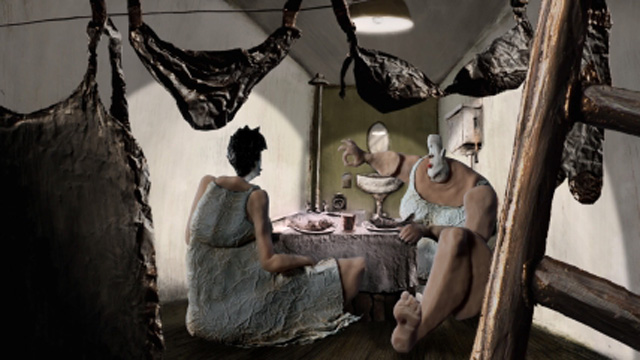
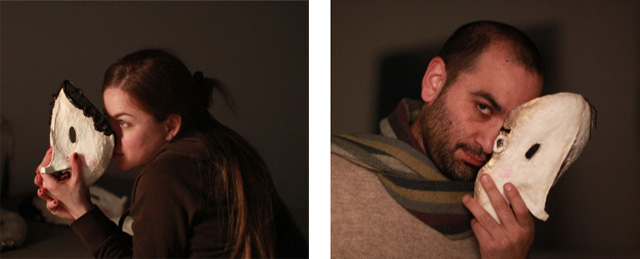
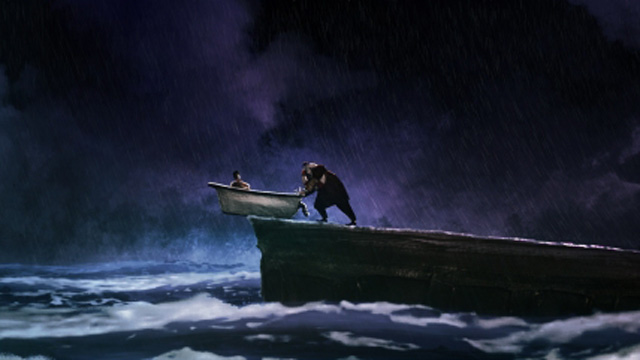
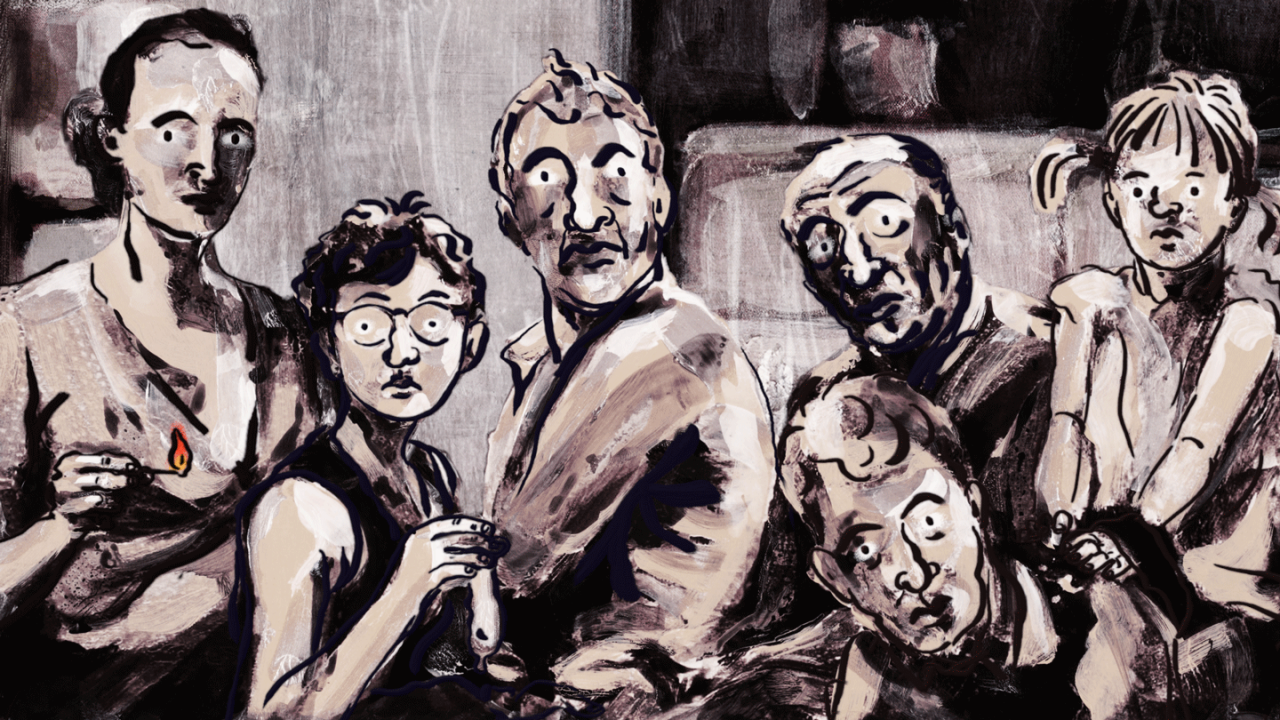
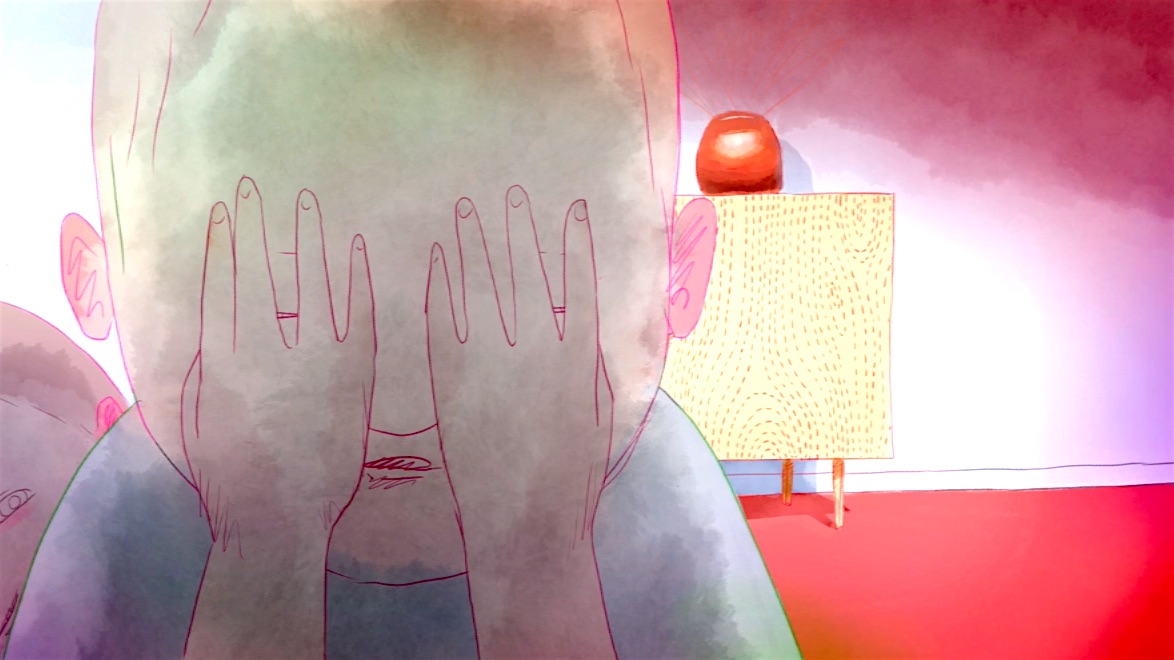
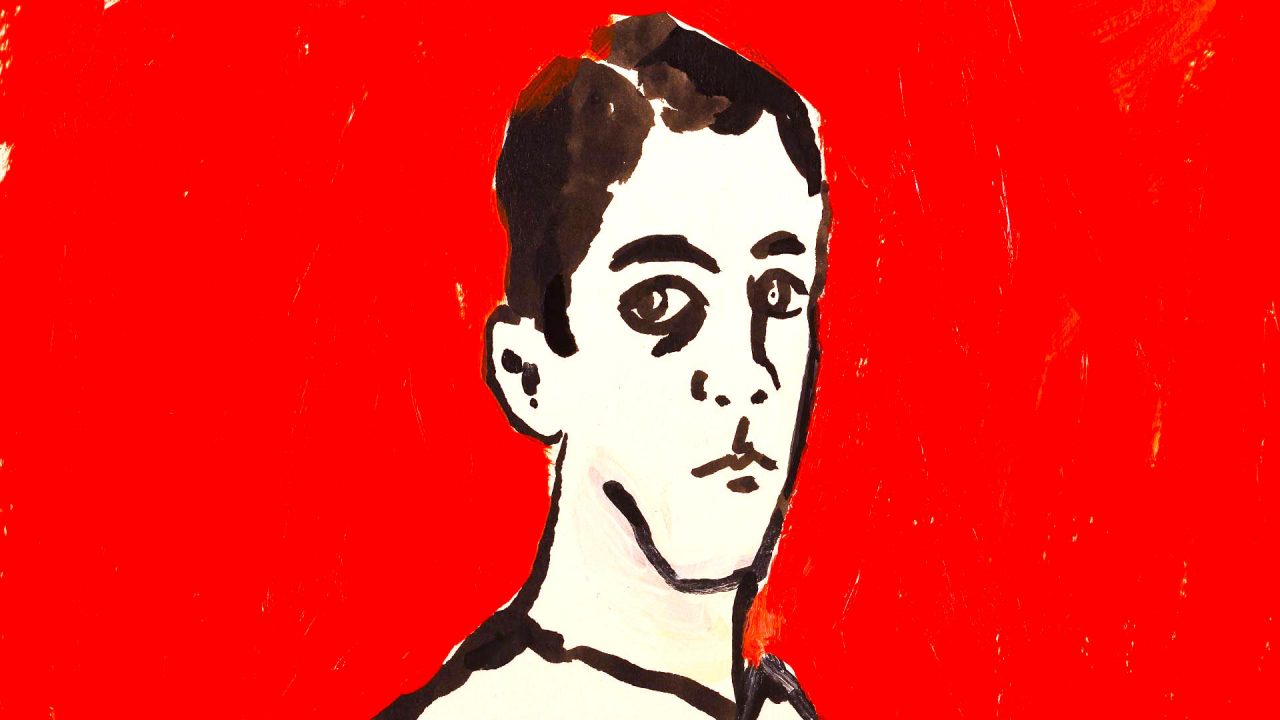

Holy Moly! Beautiful animation, the hands are fantastic.